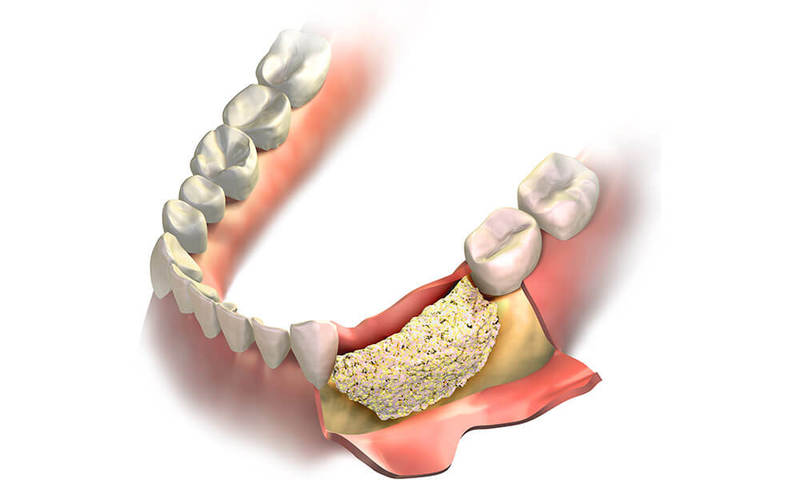
Dental bone grafting, often associated with concerns about cost, is a procedure aimed at building or replacing jawbone to provide a robust foundation for dental implants. Despite initial apprehensions, this article delves into the details of dental bone grafting, exploring its purpose and costs. The procedure, crucial for patients with insufficient bone for dental implants, ranges from $300 to $1,200 per graft, contingent on factors like graft extent and practice location. Considered an investment in oral health, dental bone grafting significantly enhances the success of subsequent dental implant procedures, emphasizing its value beyond monetary concerns. Consultation with a dentist clarifies specific costs for individual cases.

Is Dental Bone Grafting Expensive?
Dental bone grafting is a common procedure that is often necessary for individuals who require dental implants or other restorative treatments. However, one concern that many people have is the cost associated with this procedure. In this article, we will explore the topic of dental bone grafting and discuss whether it is expensive or not.
Understanding Dental Bone Grafting
1. Purpose and Procedure
- Definition: Surgical procedure adding bone or bone-like material to the jaw for implant support.
- Indications: Used when insufficient jawbone for implant support or existing bone is weak.
- Common Scenarios: Extended tooth loss leading to bone loss, trauma, or infection damage.
2. Restoring Jaw Strength and Stability
- Objective: Restore jaw strength and stability for successful dental implant placement.
- Impact: Addresses prolonged tooth loss, trauma, or infection-related jaw damage.
The Cost of Dental Bone Grafting
1. Variability in Cost
- Factors: Extent of procedure, type of graft material, and location of the dental practice.
- Average Cost: Ranges from $300 to $3,000 per graft.
- Considerations: Multiple grafts, pre- and post-operative care, anesthesia, and follow-up visits contribute to the total cost.
2. Factors Affecting Cost
- Bone Graft Material Types: Autografts, allografts, xenografts, and synthetic grafts impact costs.
- Complexity and Experience: Procedure complexity and dentist’s experience influence overall costs.
Insurance Coverage for Dental Bone Grafting
1. Coverage Variation
- Individual Plans: Varies based on the individual’s dental insurance plan.
- Possible Coverage: Some plans may cover a portion or all of the cost.
- Verification: Contact insurance provider to understand coverage and potential out-of-pocket expenses.
2. Considerations
- Necessity for Implant Success: Bone grafting is often considered necessary for successful dental implant placement.
- Policy Variations: Individual policies and coverage limits may differ, necessitating clarification from the insurance provider.
Benefits of Dental Bone Grafting
1. Long-Term Benefits
- Improved Success Rate: Strengthens jawbone, enhancing the success and longevity of dental implants.
- Functional Results: Enhanced chewing ability, improved speech, and a natural-looking smile.
- Long-Term Solution: Dental implants as a lasting solution for missing teeth, with bone grafting contributing to overall success.
Tips for Managing the Cost
If you’re concerned about the cost of dental bone grafting, there are a few tips you can keep in mind to help manage the expenses:
- Research and compare prices: Contact multiple dental practices and inquire about their pricing for dental bone grafting. This can help you find a competitive price within your budget.
- Explore financing options: Some dental practices offer financing plans or payment options to help make the cost more manageable. Inquire about these options and determine if they could be a good fit for your situation.
- Check your insurance coverage: As mentioned earlier, review your dental insurance plan to understand what portion of the cost may be covered. This can give you a clearer picture of your out-of-pocket expenses.
Conclusion
In conclusion, dental bone grafting can be a necessary and beneficial procedure for individuals who require dental implants or other restorative treatments. While the cost of dental bone grafting can vary, it is essential to consider the long-term benefits and improved success rate of dental implants. By exploring pricing options, checking insurance coverage, and discussing financing plans with dental professionals, patients can manage the cost of dental bone grafting and achieve a healthy and functional smile.
Key Takeaways: Is Dental Bone Grafting Expensive?
- Dental bone grafting can be expensive, but the cost varies depending on various factors.
- Factors that can affect the cost of dental bone grafting include the complexity of the procedure and the materials used.
- Insurance coverage may help in reducing the out-of-pocket expenses for dental bone grafting.
- It is important to consult with your dentist to get a clear understanding of the costs involved in your specific case.
- While dental bone grafting may be costly, it is a valuable investment for a healthy and functional smile in the long run.
Frequently Asked Questions
1. How much does dental bone grafting cost?
When considering dental bone grafting, the cost can vary depending on several factors. The complexity of the procedure, the location of the dental clinic, and the materials used all play a role in determining the cost. On average, dental bone grafting can cost anywhere from $200 to $3,000 per graft. It’s important to consult with your dentist or oral surgeon to get an accurate estimate based on your specific needs.
While the cost may seem high, it’s important to remember that dental bone grafting is a specialized procedure that requires expertise and precision. Investing in a high-quality graft can ensure the success and longevity of your dental implants, ultimately saving you money in the long run.
2. Does dental insurance cover the cost of bone grafting?
Whether dental insurance covers the cost of bone grafting depends on your specific insurance plan. Some plans may provide coverage for bone grafting if it is deemed medically necessary, such as when preparing for dental implants. However, coverage may vary, and it’s important to check with your insurance provider to understand the extent of your coverage.
Even if your insurance plan does not fully cover the cost of bone grafting, it’s worth exploring financing options or discussing payment plans with your dental provider. Many dental clinics offer flexible payment options to help make the procedure more affordable for patients.
3. Are there any additional costs associated with dental bone grafting?
In addition to the cost of the bone grafting procedure itself, there may be additional costs involved. These can include pre-operative examinations, X-rays, anesthesia, and post-operative medications. It’s important to discuss these potential costs with your dental provider during your consultation or treatment planning phase.
Keep in mind that while these additional costs may add up, they are necessary for a successful bone grafting procedure. Prioritizing your oral health and investing in high-quality care can lead to better long-term outcomes.
4. Can I get dental bone grafting done abroad to save money?
While it may be tempting to seek dental bone grafting treatments abroad to save money, it’s important to carefully consider the potential risks and drawbacks. Quality and safety standards can vary between countries, and it’s crucial to choose a reputable dental clinic and experienced dental professional.
Additionally, getting dental bone grafting done abroad may limit your access to follow-up care and support. Complications or issues that arise after the procedure may be more challenging to address if you are far away from your original dental provider. It’s important to weigh the potential cost savings against the potential risks and inconveniences.
5. Are there alternatives to dental bone grafting that may be more affordable?
In some cases, there may be alternatives to dental bone grafting that can be more affordable. One such alternative is a mini dental implant, which is a smaller version of traditional dental implants. Mini dental implants can sometimes be placed without the need for bone grafting, making them a potentially more cost-effective option.
However, it’s important to note that not all cases are suitable for mini dental implants, and the decision should be made in consultation with your dental provider. They will assess your specific situation and recommend the best treatment option for you, taking into consideration both cost and long-term success.
What is a dental bone graft?
Final Thoughts: Is Dental Bone Grafting Expensive?
Dental bone grafting costs vary but are crucial for oral health. While not cheap, the long-term benefits, including improved treatment success and oral health, outweigh the upfront expense. Factors like bone loss extent, graft material, procedure complexity, and location influence costs. Insurance coverage and financing options may ease expenses. Despite initial investment concerns, considering the procedure as an investment in long-term oral health makes it worthwhile. Discussing costs and financing with your dentist ensures an informed decision. Investing in your smile and oral health through dental bone grafting offers invaluable, lasting benefits.
Call or Book appointment online
:Ace Dental Care Alpharetta office: 678-562-1555 - Book Now
Ace Dental Care Norcross office: 770-806-1255 - Book Now
Disclaimer
This blog post was generated by artificial intelligence. The content of this post may not be accurate or complete, and should not be relied upon as a substitute for professional advice. If you have any questions about the content of this post, please contact us.
We are constantly working to improve the accuracy and quality of our AI-generated content. However, there may still be errors or inaccuracies. We apologize for any inconvenience this may cause.





